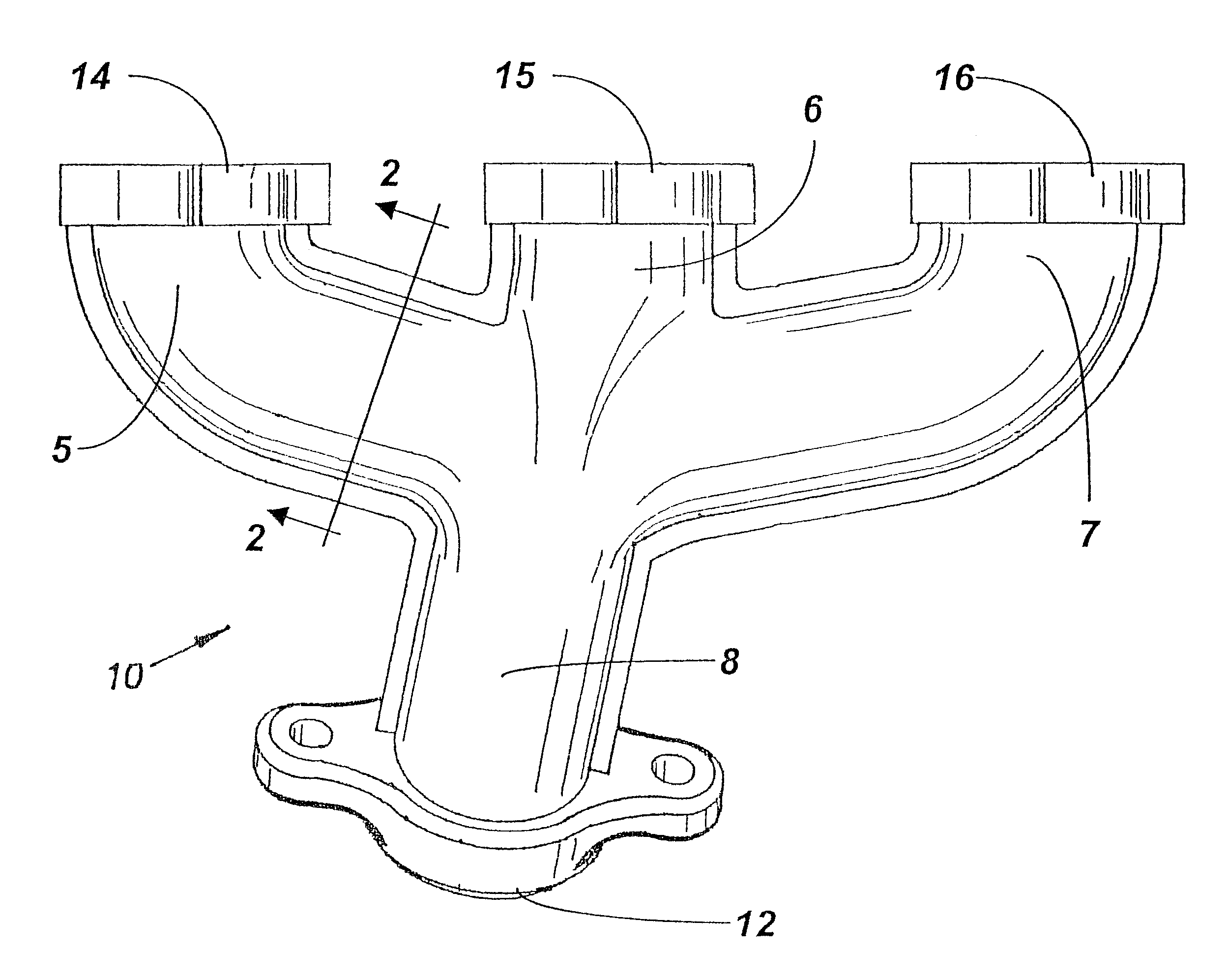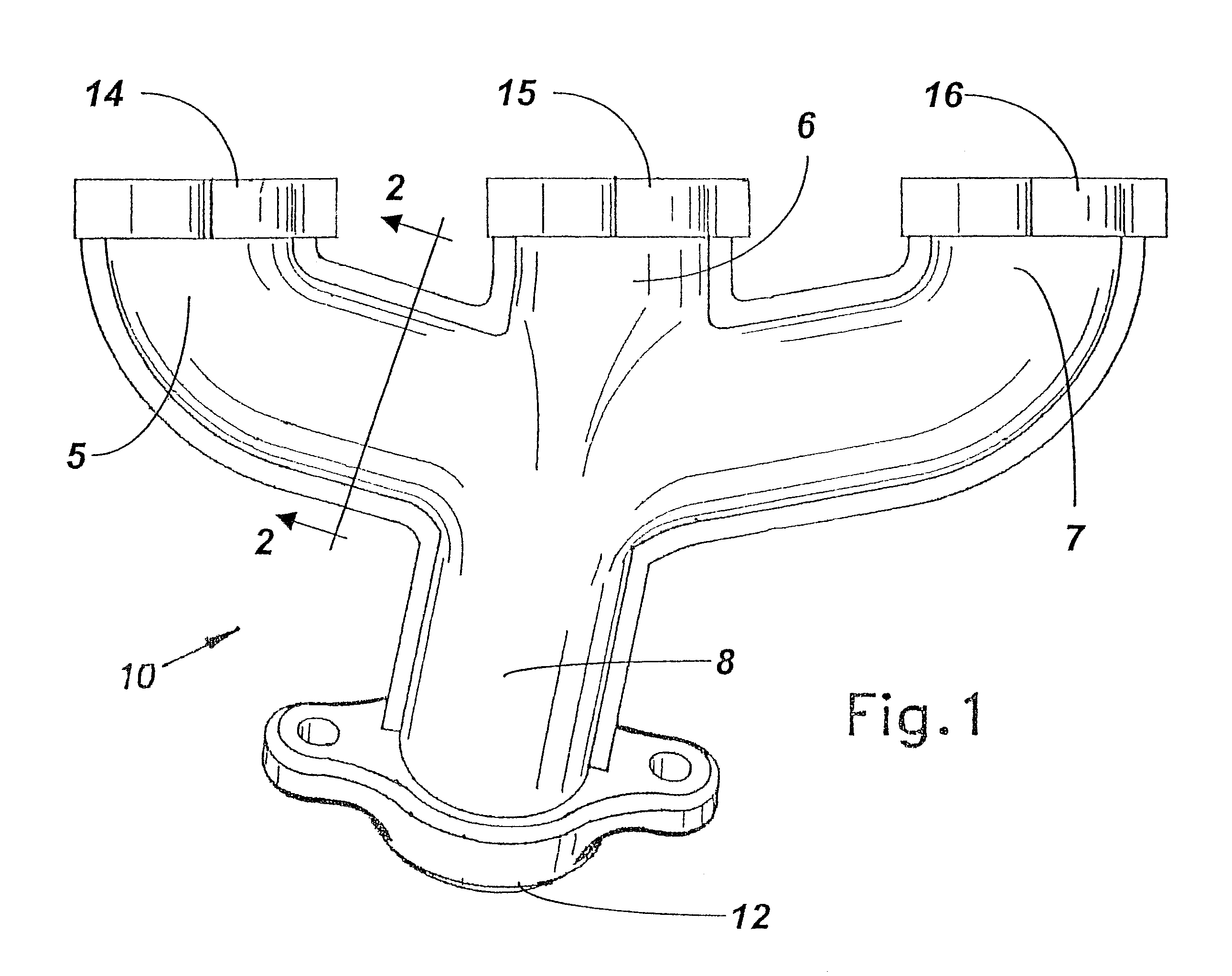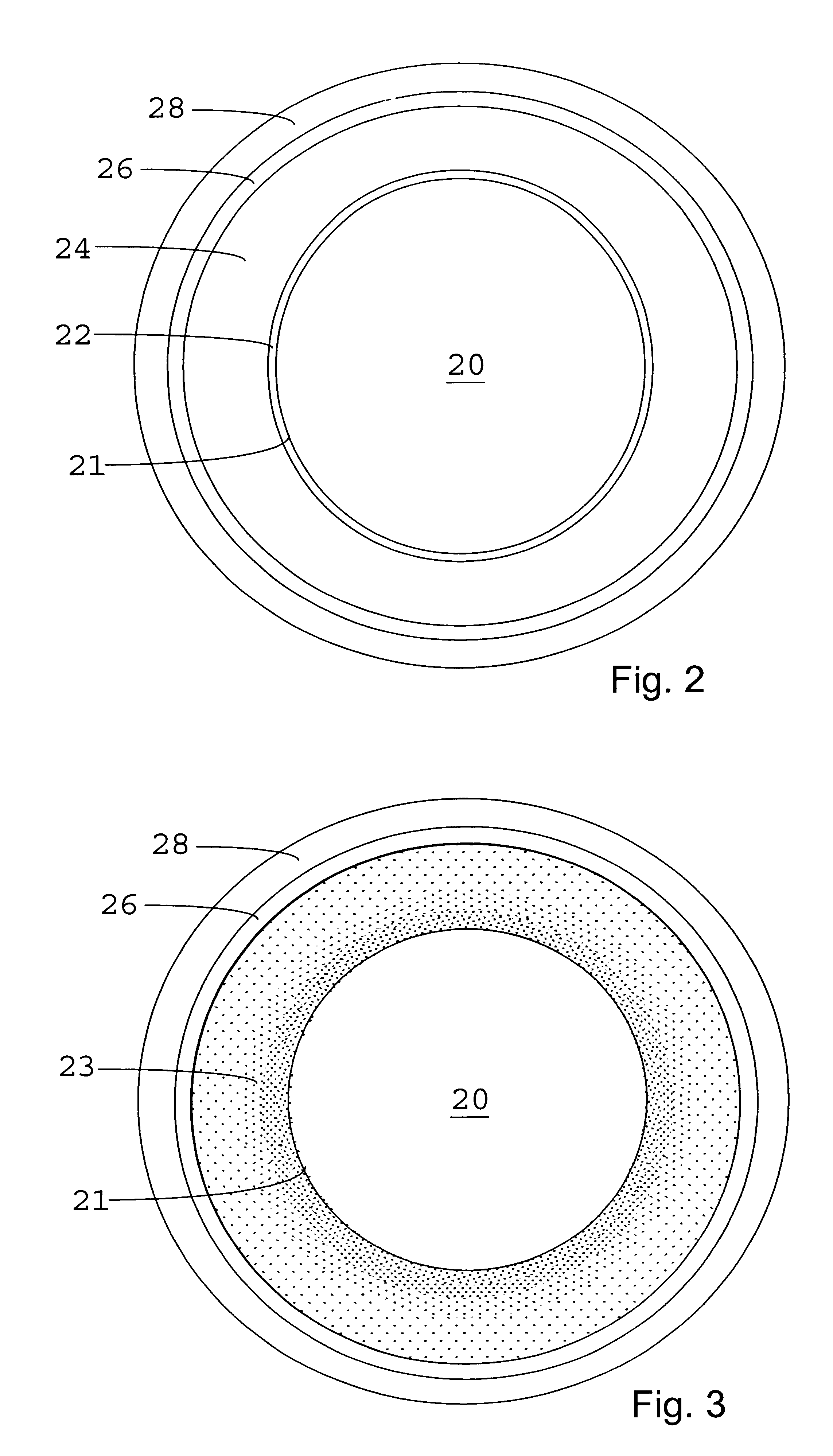Insulated exhaust manifold
a technology of exhaust manifolds and exhaust pipes, applied in the direction of machine/engine, sound absorption, surface coverings, etc., can solve the problems of unreasonably complex exhaust manifold manufacturing, less mass of welded tubing exhaust manifolds, and loss of thermal energy,
- Summary
- Abstract
- Description
- Claims
- Application Information
AI Technical Summary
Benefits of technology
Problems solved by technology
Method used
Image
Examples
Embodiment Construction
In the description that follows, when a range such as 5 to 25 (or 5-25) is given, this means preferably at least 5 and, separately and independently, preferably not more than 25. As used herein, the porosity of a layer or material is the ratio of void volume to total volume of that layer or material. For example, a layer having a porosity of 30% has a void volume equal to 30% of the layer's total volume. Localized porosity refers to the local porosity of a layer at a given radial distance from that layer's inner surface. Unless otherwise explicitly stated, localized porosities are uniform for a given radial distance from the inner surface of a particular layer. The notation "wt. %" means percent by weight.
The term ceramic includes any inorganic compound, typically (though not necessary) crystalline, formed between a metallic (or semimetallic) and a nonmetallic element, and mixtures thereof; for example, alumina (Al.sub.2 O.sub.3), titania (TiO.sub.2), and boron nitride (BN), where A...
PUM
| Property | Measurement | Unit |
|---|---|---|
| thick | aaaaa | aaaaa |
| thick | aaaaa | aaaaa |
| thick | aaaaa | aaaaa |
Abstract
Description
Claims
Application Information
 Login to View More
Login to View More - R&D
- Intellectual Property
- Life Sciences
- Materials
- Tech Scout
- Unparalleled Data Quality
- Higher Quality Content
- 60% Fewer Hallucinations
Browse by: Latest US Patents, China's latest patents, Technical Efficacy Thesaurus, Application Domain, Technology Topic, Popular Technical Reports.
© 2025 PatSnap. All rights reserved.Legal|Privacy policy|Modern Slavery Act Transparency Statement|Sitemap|About US| Contact US: help@patsnap.com



